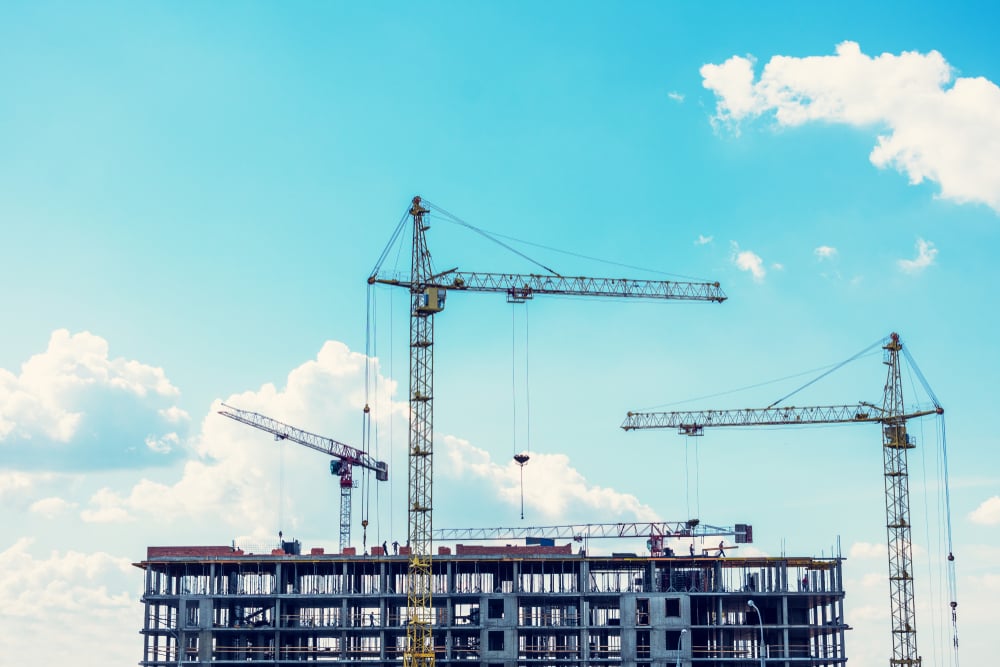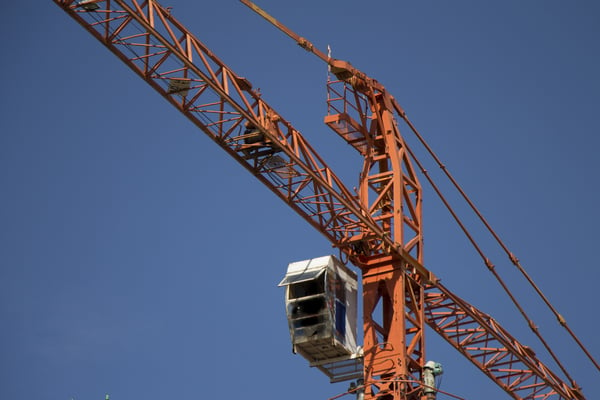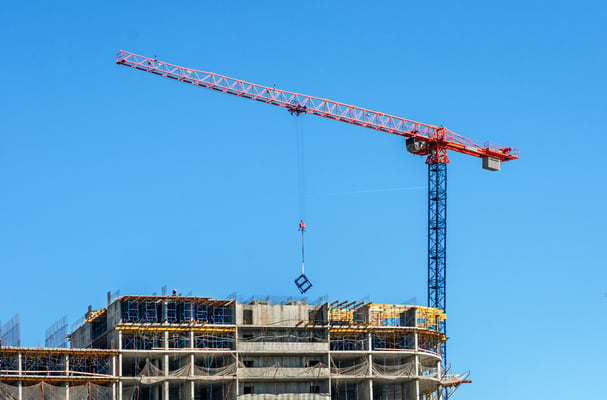The Role of Tower Cranes in High-Rise Building Projects

The skyline of any city will likely include at least a few tower cranes, which are among the largest pieces of equipment used in building projects. Construction companies use tower cranes to lift heavy materials such as steel and concrete. Large devices like acetylene torches, motors and generators are also transported using tower cranes.
Since tower cranes are slender compared with high-rise buildings, their lifting capacity can be easily underestimated based on appearance. How can the tower crane stand without tipping over? How is it capable of lifting so much weight? Does the crane become taller along with the building? In this article, the basic principles of tower cranes and their functionality will be discussed.
Construction management services make the building process safer and more efficient.
Tower Crane Parts
Tower cranes in general are composed of three main parts: the base, the mast or tower, and the slewing unit.
BASE: The base is the main support of the crane. It is connected to a large concrete foundation that carries the entire weight.
MAST OR TOWER: The mast is connected to the base, and it is the supporting structure that gives the crane its height. The mast has a large triangulated lattice structure, which gives the crane its strength.
SLEWING UNIT: The slewing unit consists of a gear and motor, attached to the top of the mast, allowing the crane to rotate along its axis. In turn, the slewing unit consists of three parts:
- Jib or working arm: A horizontal element that carries the load, with a trolley that runs along its length to move the load in and out.
- Machinery arm: A shorter horizontal element that holds the load-lifting motor. It also contains electronic controls, the cable drum, and concrete counterweights to keep balance.
- Operator’s cabin: Consists of the space in which the operator handles all the functions of the crane.
Tower Crane Specifications

A typical tower crane has the following specifications, but note there are differences depending on the model and manufacturer:
- Maximum unsupported height: 265 feet or 80 meters. It can reach taller if attached into the building, since the building rises around the crane.
- Maximum reach: 230 feet or 70 meters
- Maximum lifting power: 19.8 tons or 18 metric tons
- Counterweights: 20 tons or 16.3 metric tons
Note that the maximum load is 18 metric tons, but the crane cannot lift that much weight when the load is positioned at the end of the jib. The closer the load is located to the mast, the more weight the crane can lift safely. Operators have two limit switches to prevent overloading: a maximum load switch to stay below 18 metric tons, and a maximum moment switch to protect the crane from the load’s bending force.
Weather monitoring in construction sites is important, but especially when tower cranes are used. A strong gust of wind can destabilize the load and structure, causing a collapse. Project managers should constantly check weather forecasts, and avoid lifting operations with unfavorable weather. A weather monitoring system at the project sites can warn about dangerous wind conditions that are not covered in forecasts.
Tower Crane Support System
One of the first questions that may be asked by someone looking at a tower crane is these structures stand upright. There are several elements that contribute to the tower crane’s stability. The concrete pad is a concrete foundation made by the construction company several weeks prior to the crane’s arrival. Typical measurements for the pad are 30x30x4 feet (10x10x1.3 meters), with a weight of around 400,000 pounds. Large anchor bolts are deeply embedded in the concrete pad, and these elements support the base of the crane.

Tower cranes are delivered to construction projects in parts, which are then assembled on-site. Qualified installers assemble the jib and the machinery section, these horizontal elements are then positioned on the mast, which is only 40 feet tall initially. Once this assembly is completed, the counterweights are placed by a mobile crane. The mast rises from the concrete pad, and it remains upright thanks to its triangulated structure. To increase the crane height, the crew adds sections to the mast with a climbing frame:
- A weight is hung on the jib to balance the counterweight.
- The slewing unit is detached from the top of the mast and hydraulic rams in the top climber push the slewing unit up 20 feet.
- The crane operator uses the crane to lift another 20 ft mast section into the gap and then it is bolted in place.
These steps are repeated continuously until the desired height is achieved. Once it is time to remove the tower crane from the construction site, the crane disassembles its own mast and smaller cranes are used to disassemble the rest.
Nearby EngineersNew York Engineers has a MEP design track record of 1,000+ projects. Contact us via email (info@ny-engineers.com) or phone (786) 788-0295212-575-5300, and make sure your building systems meet codes.

Keith Fink
Keith is the Franchise Brand Manager at NY Engineers, Keith is all things related to our project portfolio, brands and all things you need to know before we start your project.
Join 15,000+ Fellow Architects and Contractors
Get expert engineering tips straight to your inbox. Subscribe to the NY Engineers Blog below.


